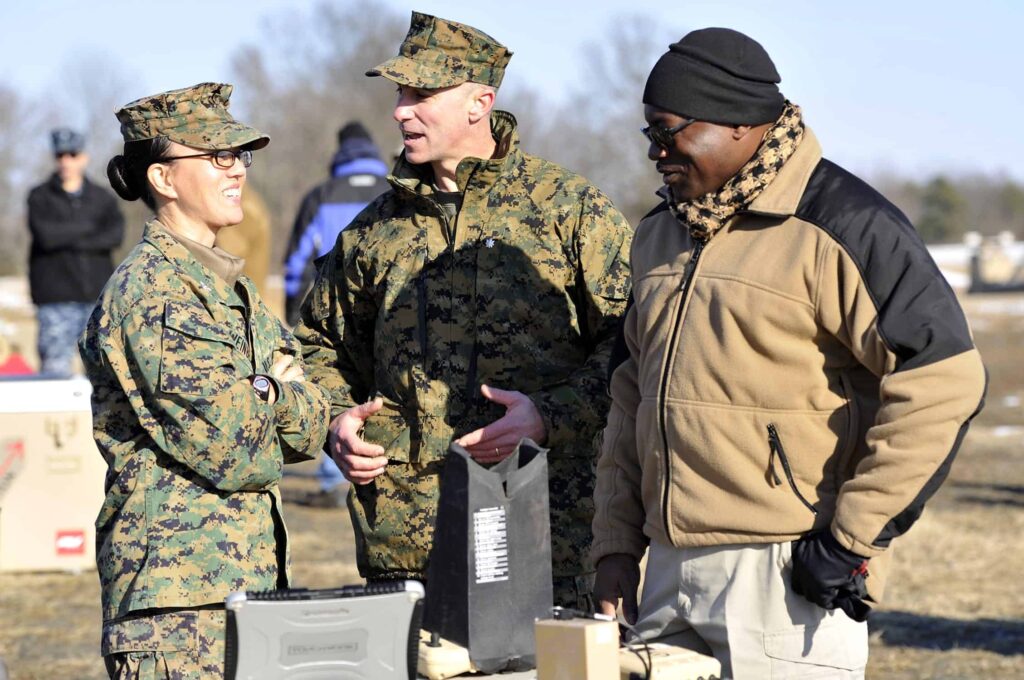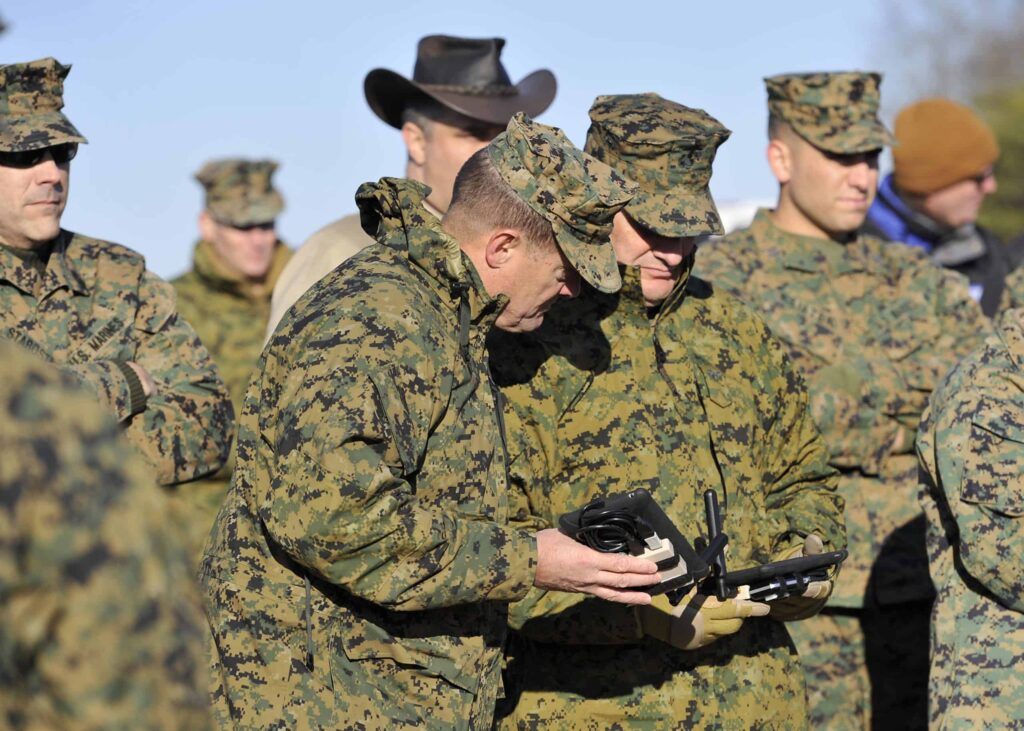
Col. Anne Weinberg, left, Intelligence Integration Division director for Marine Corps Combat Development Center (MCCDC), discusses the small unnamed aircraft systems (SUAS) ground control station with Lt. Col. James Hamill, SUAS capabilities and integration officer for Combat, Development and Integration at MCCDC and Jerome Adams, instructor at Training and Logistics Support Activity during a demonstration Dec. 12 at Marine Corps Base Quantico, Va. (U.S. Navy photo)
In the past, American warfighters lost their lives to improvised explosive devices (IED) on the battlefield. But now with technological advancements, small unmanned aircraft systems (SUAS) can save lives.
Imagine a Marine Corps platoon using a small unmanned aircraft to identify and ultimately track an enemy planting an IED more than 10 miles away from the platoon’s location. By observing the enemy on a remote video terminal away, from the threat location, it allowed the platoon to deploy fire support and eliminate the IED implanters without putting any Marines in harm’s way.
Marine Corps Special Operations Command (MARSOC) operators demonstrated that scenario to senior combat leadership Dec. 12 using the advanced capabilities of the SUAS family of systems at Marine Corps Base Quantico, Va.
A flight demonstration of the RQ-11B Raven, RQ-12A Wasp IV, and RQ-20A Puma was coordinated by Marine Corps Combat, Development and Integration (CD&I) at Quantico, who manages ground requirements; Navy and Marine Corps Small Tactical Unmanned Aircraft Systems Program Office (PMA-263) located at Naval Air Station Patuxent River, Md., who manages the SUAS acquisition; and Marine Corps Warfighting Laboratory, MCB Quantico.
“The goal today was to inform leadership of the advances in Group 1 small UAS technology and show their applicability to regular Marine Corps forces,” said Lt. Col. James Hamill, SUAS capabilities and integration officer with CD&I. “Several advancements have taken place in unmanned aircraft systems in their tactics, techniques and procedures. MARSOC has led the way and we want to show Marine Corps leadership that these techniques and procedures are equally applicable and relevant to the rest of the Marine Corps. They’re not just for the special operators of MARSOC.”

Maj. Gen. Mark Clark, center left, commander of Marine Corps Special Operations Command and Maj. Gen. Frederick Padilla, center right, director of operations with Plans, Policies and Operations at Headquarters Marine Corps watch a small unmanned aircraft systems demonstration on a hand-held monitor Dec. 12 at Marine Corps Base Quantico, Va. (U.S. Navy photo)
UAS operators had each of the air vehicles fly a planned path and carry out various scenarios. Guests viewed the operations on monitors and small mobile terminals similar to what Marines would do on the battlefield.
“The timing of this demonstration could not have been better,” said Chris Sacco, PMA-263 SUAS integrated product team lead. “We are in the process of aligning all of the Group 1 small UAS into one Marine Corps family of systems acquisition objective, which will significantly improve the ability to properly fund the UASs for the troops.”
The Group 1 UASs are small, lightweight aircraft that are hand launched and can be manually controlled by the operator on the ground, or automatically fly a preplanned route along a set of waypoints. Each battery-powered hand-launched system provides ‘over-the-hill’ intelligence, surveillance and reconnaissance (ISR) to Marine Corps units using electro-optical, infrared cameras.
“Situational awareness is everything,” Hamill said. “We don’t concentrate our forces in large groups as we have in the past. Situational awareness of what’s out in front of you makes you that much more capable to react to it. If you know what the enemy is doing then you’re already ahead.”
Source: NAVAIR


















